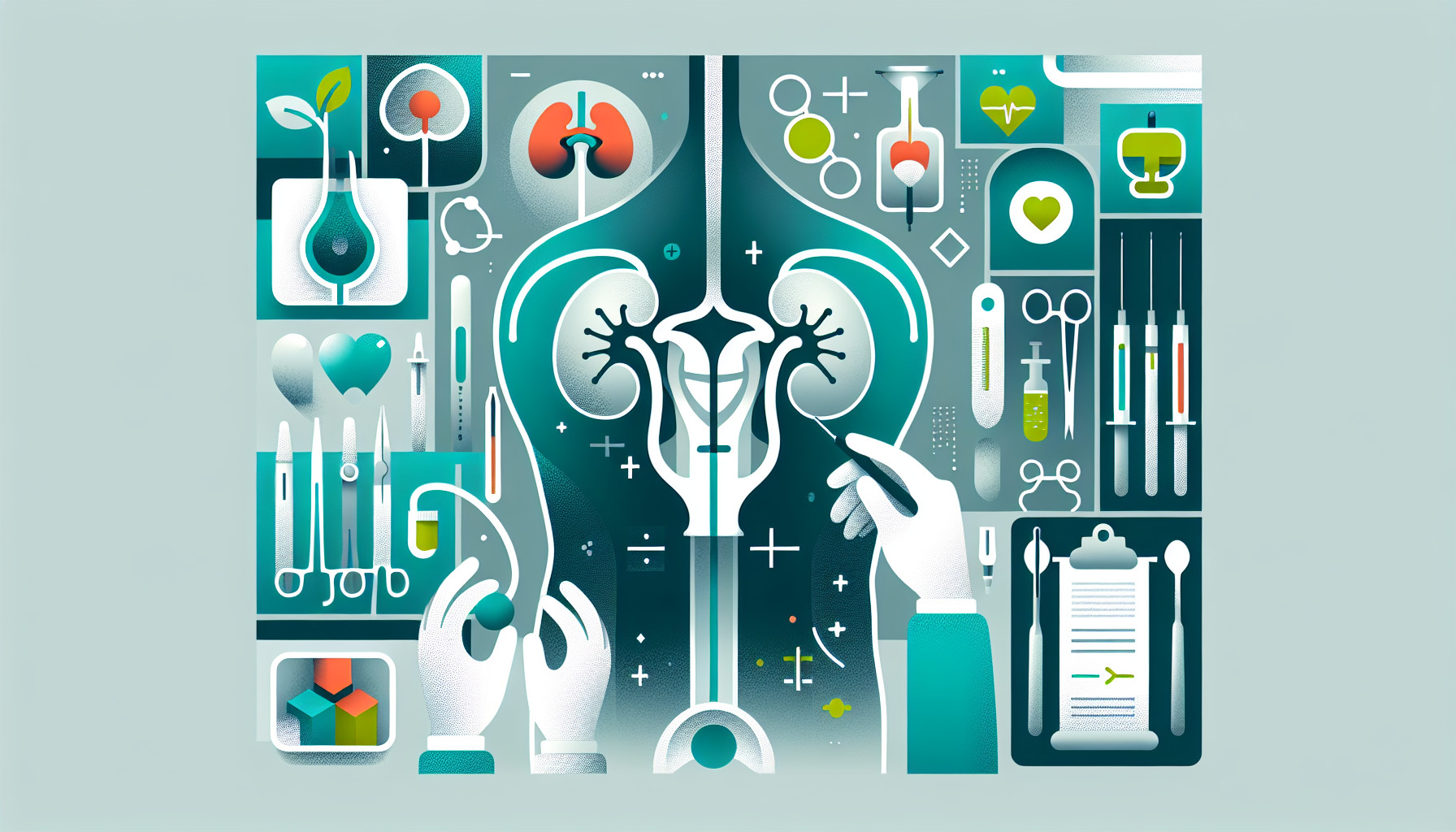Our Summary
This research paper introduces a new surgical technique for older patients, who often struggle to get the nutrients they need. This technique, called a complete retroperitoneal cutaneous ureterostomy, is less invasive than other options and can be done at the same time as a robot-assisted radical cystectomy - a surgery to remove the bladder. This new technique involves working in an area behind the abdominal cavity to minimize risks and aim for a surgery that doesn’t require a tube (stent) to be left in the body afterwards.
The researchers found that this method took about 30 minutes to complete on average. After the surgery, two-thirds of the patients didn’t need a stent after one month, and by four months, none of the patients needed a stent. There were also no cases where a stent had to be reinserted after being removed.
The conclusion is that this new surgical technique could help avoid complications related to the digestive system after surgery.
FAQs
- What is a cutaneous ureterostomy and why is it beneficial for older patients?
- What is the procedure time for a complete retroperitoneal cutaneous ureterostomy?
- What are the postoperative stent-free rates for patients undergoing a complete retroperitoneal cutaneous ureterostomy?
Doctor’s Tip
One helpful tip a doctor might tell a patient about ureterostomy is to carefully monitor the stoma site for any signs of infection, irritation, or blockage. It is important to keep the area clean and dry to prevent complications. Additionally, staying well-hydrated and following a proper diet can help promote healthy urine flow and overall healing. Regular follow-up appointments with your healthcare provider are also crucial for monitoring your progress and addressing any concerns.
Suitable For
Patients who are older and in a hypoalimentation state, and who may not be suitable candidates for more invasive intestinal tract reconstruction techniques, are typically recommended for ureterostomy. This includes patients undergoing robot-assisted radical cystectomy. The complete retroperitoneal cutaneous ureterostomy technique may be particularly beneficial for these patients as it aims to minimize complications and achieve stent-free outcomes. It is important to consider individual patient factors and consult with a healthcare provider to determine the most appropriate treatment plan.
Timeline
Before Ureterostomy:
- Patient undergoes evaluation and consultation with a urologist to determine the need for ureterostomy.
- Pre-operative tests and imaging are conducted to assess the patient’s overall health and the condition of the urinary tract.
- Patient undergoes pre-operative preparation, which may include bowel preparation and fasting.
- Surgery is scheduled and the patient is informed about the procedure and potential risks.
After Ureterostomy:
- Patient undergoes the complete retroperitoneal cutaneous ureterostomy procedure simultaneously with robot-assisted radical cystectomy.
- The procedure involves extending the retroperitoneal space to minimize complications and achieve stent-free outcomes.
- The median procedure time for complete retroperitoneal cutaneous ureterostomy is approximately 30 minutes.
- Postoperatively, the patient is monitored for any complications and receives appropriate post-operative care.
- Stent-free rates at 1 and 4 months postoperatively are monitored, with a reported rate of 100% at 4 months.
- Patients are followed up regularly to monitor the stoma site and overall health, with the goal of avoiding postoperative complications.
What to Ask Your Doctor
- What are the potential complications or risks associated with a ureterostomy procedure?
- How long is the recovery process after a ureterostomy?
- Will I need to make any lifestyle changes or modifications after the procedure?
- How often will I need to follow up with my doctor after the procedure?
- Are there any specific dietary restrictions or recommendations I should follow after a ureterostomy?
- Will I need to use a stent after the procedure, and if so, for how long?
- What should I do if I experience any pain or discomfort around the stoma site?
- How can I best care for and maintain the stoma site to prevent infection or other complications?
- Are there any activities or exercises I should avoid after a ureterostomy?
- What signs or symptoms should I watch for that may indicate a problem with the ureterostomy?
Reference
Authors: Tanaka S, Kitano G, Kato M, Ogura Y, Kojima T. Journal: IJU Case Rep. 2024 Mar 5;7(3):250-254. doi: 10.1002/iju5.12717. eCollection 2024 May. PMID: 38686063
